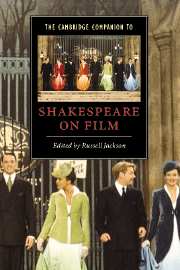Introduction
Published online by Cambridge University Press: 28 May 2006
Summary
The romantic comedy Shakespeare in Love (1998) wittily puts the dramatist into the world of show business. Shakespeare's relationship with the theatre manager, Henslowe - and through him with 'the money' - is the occasion for a multitude of jokes referring to the entertainment industry of late sixteenth-century London in terms of its equivalent four hundred years later. In one moment of crisis Henslowe is even on the point of giving birth to a great cliché. 'The show must . . .' he starts, and Shakespeare completes the phrase by urging him impatiently to 'Go on.' The moment passes, unnoticed by either of them. The tension between the artist and the marketplace has always been a good source of humour in drama and fiction and on film, and the story is usually told in terms of the crassness of the producers and the crushed idealism of the 'creative' department. This is true to the experience of many artists, not least those writers and directors who worked in Hollywood at the height of the studios' powers. Writers and directors have often given accounts of their dealings with the 'front office' in which the latter's functionaries figure as craven, sentimental and reactionary, a characterisation many in the industry would of course dispute.
On a less personal and anecdotal level, analysts of culture are reluctant to allow that commercial films can be effectively radical. In his study of the cultural politics of Shakespearean interpretation, Big-Time Shakespeare (1996), Michael Bristol ruefully observes that ‘the cultural authority of corporate Shakespeare has nothing to do with ideas of any description’. Perhaps one might argue that if ‘ideas’ are defined less restrictively, the tension between ‘Shakespeare’, ideas and big business has yielded an engaging variety of cinematic results
- Type
- Chapter
- Information
- The Cambridge Companion to Shakespeare on Film , pp. 1 - 12Publisher: Cambridge University PressPrint publication year: 2000
- 3
- Cited by

